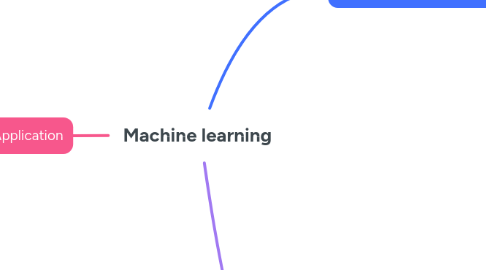
1. Application
1.1. Analyzing images of products on a production line to automatically classify them.
1.2. Detecting tumors in brain scans
1.3. Automatically classifying news articles
1.4. automatically flagging offensive comments on discussion forums
1.5. Summarizing long documents automatically
1.6. Forecasting your company's revenue next year, based on many performance metrics
1.7. Detecting credit card fraud
1.8. Representing clients based on their purchases so that you can design a different marketing strategy for each segment.
1.9. Representing a complex, high-dimensional dataset in a clear and insightful diagram
1.10. Recommending a product that a client may be interested in, based on past purchases.
1.11. Building an intelligent bot for a game.
2. Type of machine learning
2.1. Supervised Learning
2.1.1. In supervised learning, the training set you feed to the algorithm includes the desired solutions, called labels.
2.2. Unsupervised Learning
2.2.1. In unsupervised learning, the training data is unlabeled. The system tries to learn without a teacher.
2.3. Semi-supervised Learning
2.3.1. Since labeling data is usually time-consuming and costly, you will often have plenty of unlabeled instances and few labeled instances. Some algorithms can deal with data that’s partially labeled.
2.4. Self-supervised Learning
2.4.1. Another approach to Machine Learning involves actually generating a fully labeled dataset from a fully unlabeled one. Again, once the whole dataset it labeled, any supervised learning algorithm can be used. This approach is called self-supervised learning.
2.5. Reinforcement Learning
2.5.1. Reinforcement Learning is a very different beast. The learning system, called an agent in this context, can observe the environment, select and perform actions, and get rewards in return (or penalties in the form of negative rewards).
